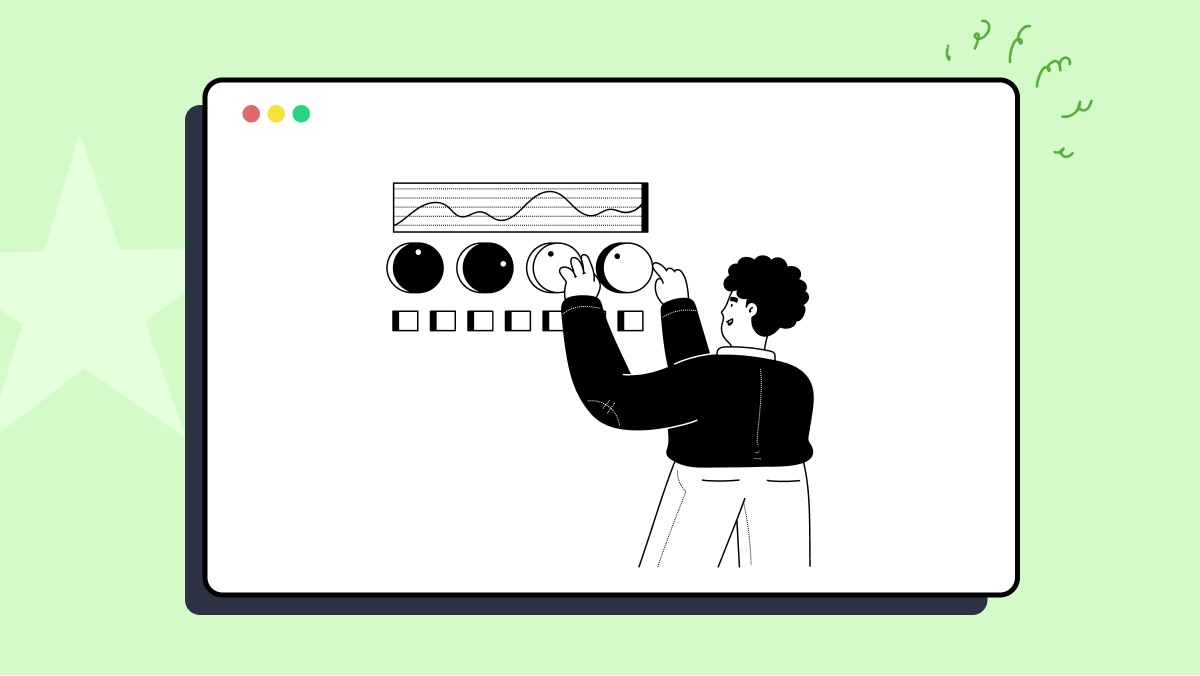How to use whenInitFailsTestIsNotCalled method of org.fluentlenium.adapter.junit.FluentTestRuleTest class
Best FluentLenium code snippet using org.fluentlenium.adapter.junit.FluentTestRuleTest.whenInitFailsTestIsNotCalled
Source: FluentTestRuleTest.java
...41 verify(testRule, never()).failed(any(Throwable.class), eq(description));42 verify(testRule).finished(description);43 }44 @Test45 public void whenInitFailsTestIsNotCalled() throws Throwable {46 FluentTestRule testRule = spy(new FluentTestRule(this));47 doThrow(RuntimeException.class).when(testRule).starting(description);48 Assertions.assertThatThrownBy(() -> testRule.apply(base, description).evaluate())49 .isExactlyInstanceOf(RuntimeException.class);50 verify(base, never()).evaluate();51 verify(testRule, never()).succeeded(description);52 verify(testRule).failed(any(RuntimeException.class), eq(description));53 verify(testRule).finished(description);54 }55 //CHECKSTYLE.ON: IllegalThrows56}...whenInitFailsTestIsNotCalled
Using AI Code Generation
1package org.fluentlenium.adapter.junit;2import org.fluentlenium.core.FluentAdapter;3import org.junit.Rule;4import org.junit.Test;5import org.junit.rules.TestRule;6import org.junit.runner.Description;7import org.junit.runners.model.Statement;8import static org.assertj.core.api.Assertions.assertThat;9public class FluentTestRuleTest {10 public TestRule rule = new TestRule() {11 public Statement apply(Statement base, Description description) {12 return new Statement() {13 public void evaluate() throws Throwable {14 base.evaluate();15 }16 };17 }18 };19 public void whenInitFailsTestIsNotCalled() {20 assertThat(new FluentAdapter() {21 public TestRule rule = new FluentTestRule();22 public void test() {23 assertThat(true).isFalse();24 }25 }.getTestResult().wasSuccessful()).isFalse();26 }27}28package org.fluentlenium.adapter.junit;29import org.fluentlenium.core.FluentAdapter;30import org.junit.Rule;31import org.junit.Test;32import org.junit.rules.TestRule;33import org.junit.runner.Description;34import org.junit.runners.model.Statement;35import static org.assertj.core.api.Assertions.assertThat;36public class FluentTestRuleTest {37 public TestRule rule = new TestRule() {38 public Statement apply(Statement base, Description description) {39 return new Statement() {40 public void evaluate() throws Throwable {41 base.evaluate();42 }43 };44 }45 };46 public void whenInitFailsTestIsNotCalled() {47 assertThat(new FluentAdapter() {48 public TestRule rule = new FluentTestRule();49 public void test() {50 assertThat(true).isFalse();51 }52 }.getTestResult().wasSuccessful()).isFalse();53 }54}whenInitFailsTestIsNotCalled
Using AI Code Generation
1 public void whenInitFailsTestIsNotCalled() {2 try {3 FluentAdapter adapter = new FluentAdapter() {4 public void initFluent(final FluentControl control) throws Exception {5 throw new RuntimeException("Init failed");6 }7 };8 adapter.initFluent(new FluentControl());9 fail("Should have failed");10 } catch (RuntimeException e) {11 assertThat(e.getMessage()).isEqualTo("Init failed");12 }13 }14Line 1: package org.fluentlenium.adapter.junit;15import org.fluentlenium.core.FluentControl;16import org.junit.Test;17Line 5: import static org.assertj.core.api.Assertions.assertThat;18import static org.junit.Assert.fail;19Line 7: public class FluentTestRuleTest {20 public void whenInitFailsTestIsNotCalled() {21 try {22 FluentAdapter adapter = new FluentAdapter() {23 public void initFluent(final FluentControl control) throws Exception {24 throw new RuntimeException("Init failed");25 }26 };27 adapter.initFluent(new FluentControl());28 fail("Should have failed");29 } catch (RuntimeException e) {30 assertThat(e.getMessage()).isEqualTo("Init failed");31 }32 }33}34Line 8: }whenInitFailsTestIsNotCalled
Using AI Code Generation
1package org.fluentlenium.adapter.junit.integration.configuration.rules;2import org.fluentlenium.adapter.junit.FluentTestRule;3import org.fluentlenium.adapter.junit.integration.IntegrationFluentTest;4import org.junit.Rule;5import org.junit.Test;6import org.junit.rules.ExpectedException;7import static org.assertj.core.api.Assertions.assertThat;8public class WhenInitFailsTestIsNotCalledRuleTest extends IntegrationFluentTest {9 public ExpectedException thrown = ExpectedException.none();10 public FluentTestRule fluentTestRule = new FluentTestRule();11 public void whenInitFailsTestIsNotCalled() {12 thrown.expect(IllegalStateException.class);13 thrown.expectMessage("FluentLenium has not been initialized. You should call initFluent(driver) or initFluent(driver, baseUrl) method.");14 assertThat(fluentTestRule.getDriver()).isNotNull();15 }16}17package org.fluentlenium.adapter.junit.integration.configuration.rules;18import org.fluentlenium.adapter.junit.FluentTestRule;19import org.fluentlenium.adapter.junit.integration.IntegrationFluentTest;20import org.junit.Rule;21import org.junit.Test;22import org.junit.rules.ExpectedException;23import static org.assertj.core.api.Assertions.assertThat;24public class WhenInitFailsTestIsNotCalledRuleTest extends IntegrationFluentTest {25 public ExpectedException thrown = ExpectedException.none();26 public FluentTestRule fluentTestRule = new FluentTestRule();27 public void whenInitFailsTestIsNotCalled() {28 thrown.expect(IllegalStateException.class);29 thrown.expectMessage("FluentLenium has not been initialized. You should call initFluent(driver) or initFluent(driver, baseUrl) method.");30 assertThat(fluentTestRule.getDriver()).isNotNull();31 }32}Blogs
Check out the latest blogs from LambdaTest on this topic:
In my last blog, I investigated both the stateless and the stateful class of model-based testing. Both have some advantages and disadvantages. You can use them for different types of systems, depending on whether a stateful solution is required or a stateless one is enough. However, a better solution is to use an aggregate technique that is appropriate for each system. Currently, the only aggregate solution is action-state testing, introduced in the book Paradigm Shift in Software Testing. This method is implemented in Harmony.
The web paradigm has changed considerably over the last few years. Web 2.0, a term coined way back in 1999, was one of the pivotal moments in the history of the Internet. UGC (User Generated Content), ease of use, and interoperability for the end-users were the key pillars of Web 2.0. Consumers who were only consuming content up till now started creating different forms of content (e.g., text, audio, video, etc.).
Sometimes, in our test code, we need to handle actions that apparently could not be done automatically. For example, some mouse actions such as context click, double click, drag and drop, mouse movements, and some special key down and key up actions. These specific actions could be crucial depending on the project context.
Automation Testing Tutorials
Learn to execute automation testing from scratch with LambdaTest Learning Hub. Right from setting up the prerequisites to run your first automation test, to following best practices and diving deeper into advanced test scenarios. LambdaTest Learning Hubs compile a list of step-by-step guides to help you be proficient with different test automation frameworks i.e. Selenium, Cypress, TestNG etc.
LambdaTest Learning Hubs:
- JUnit Tutorial
- TestNG Tutorial
- Webdriver Tutorial
- WebDriverIO Tutorial
- Protractor Tutorial
- Selenium 4 Tutorial
- Jenkins Tutorial
- NUnit Tutorial
- Jest Tutorial
- Playwright Tutorial
- Cypress Tutorial
- PyTest Tutorial
YouTube
You could also refer to video tutorials over LambdaTest YouTube channel to get step by step demonstration from industry experts.
Most used method in FluentTestRuleTest
Try LambdaTest Now !!
Get 100 minutes of automation test minutes FREE!!




